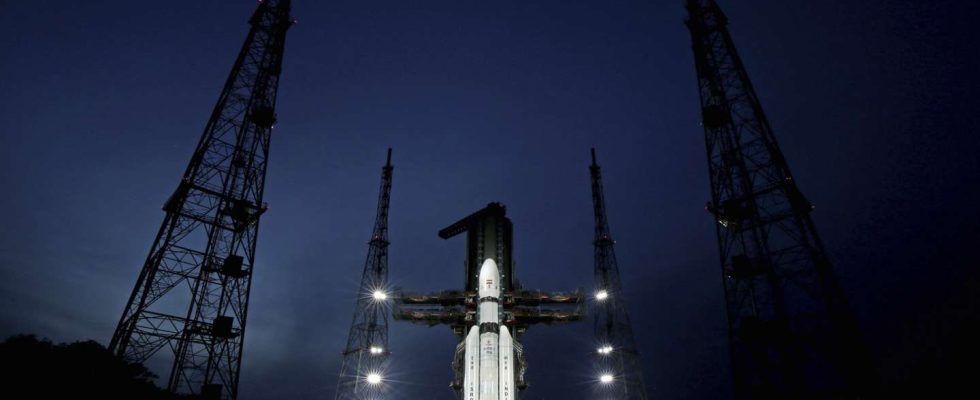India launched Friday, July 14, in a new attempt for an unmanned landing on the Moon, the next stage of a booming space program that is rapidly approaching those of the world’s major powers. If the mission is crowned with success, the most populous country in the world, with more than 1.4 billion inhabitants, would join the very exclusive club of countries having succeeded in a controlled moon landing, namely Russia, the United States and the China.
The Chandrayaan-3 rocket left the ground and soared through Earth’s atmosphere successfully on Friday morning. She reached her “precise orbit” and has “started his journey to the moon”, wrote the Indian Space Office (ISRO) on Twitter. This mission, lasting fourteen days, costs 74.6 million dollars (66.5 million euros), according to media sources. The goal is to land a mobile robot to explore the surface of the Moon.
Big ambitions
The Chandrayaan program’s latest attempt comes four years after a failed ground crew lost contact shortly before the moon landing. But this time, ISRO is hopeful of succeeding and is already planning a future manned mission to the Moon.
Friday’s mission confirms India’s great ambitions in this area. Since the launch of a probe into orbit around the Moon in 2008, India’s space program has grown considerably. In 2014, India thus became the first Asian country to put a satellite in orbit around Mars and, three years later, to launch 104 satellites in a single mission. By next year, the Asian giant should launch a three-day manned mission in orbit around the Earth.
India is also striving to increase its share of the commercial space market in the world, which is currently 2%, thanks to much lower costs than its competitors. According to experts, the country can remain competitive by copying and adapting space technologies that already exist, but also by relying on its many highly qualified engineers who are paid far less than their foreign counterparts.
The previous moon landing attempt in 2019, which coincided with the fiftieth anniversary of American Neil Armstrong’s first moon landing, cost $140 million (124.6 million euros), nearly double the cost from Friday’s launch, but priced well below similar projects from other countries.

